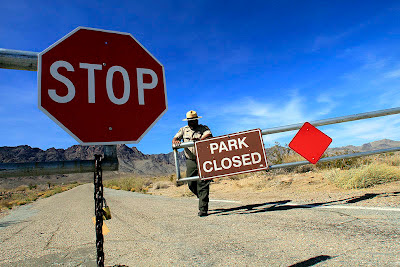Donors who bailed out state parks want their money back
By Paul Rogers
San Jose Mercury News
Saying they feel betrayed by the discovery of $54 million hidden in two state parks accounts, a growing number of groups that donated money to keep California state parks from closing this year now say they want a refund -- or at least a binding promise from lawmakers to spend the extra money on parks.
"They sort of came to us under false pretenses. They cried wolf, and we responded," said Reed Holderman, executive director of the Sempervirens Fund, a nonprofit conservation group in Los Altos. "An elegant solution would be for them to refund the nonprofits, and put whatever is left into parks."
Holderman's group announced in March that it would donate $250,000 in private donations to the state parks department to keep Castle Rock State Park off the closure list. Known for its sweeping views of the Pacific Ocean, Castle Rock is located along the Santa Cruz-Santa Clara County line.
State Parks Director Ruth Coleman resigned Friday and her top deputy was fired after Gov. Jerry Brown's administration announced the state parks department had kept $54 million in two accounts without reporting it to the state Department of Finance.
Generous donations
There has been no evidence that any of the money was embezzled or stolen, and Coleman says she did not know of it. Still, the discovery came at a politically difficult time for the governor. Brown announced last year that the state was so short of cash that 70 state parks -- one-quarter of the entire system -- had to be closed by July 1 to save $22 million. Critics called the threat a political gimmick to convince middle-class voters to support Brown's tax increase measure on the upcoming November ballot.
When dozens of civic groups, local cities and businesses stepped forward with donations, the parks closures were averted. The state attorney general's office is now investigating.
Meanwhile, U.S. Rep. Linda Sanchez, D-Cerritos, sent a letter this week to the state parks department calling it "irresponsible with taxpayer dollars" and demanding that it refund $30,000 that the city of Whittier donated to help keep Pio Pico State Park open. The park is famous for its adobes and exhibits of life in California around the time of the Gold Rush.
"I am extremely proud our community stepped up to keep this treasured state historic park open," Sanchez wrote. "However, based upon the recently discovered budget surplus, it is clear that there was no need for the city to use their general funds for this purpose."
What happened?
In the Bay Area, the Coe Park Preservation Fund, a nonprofit group that pledged $300,000 a year over three years to keep Henry W. Coe State Park near Morgan Hill open, said that if lawmakers do not devote the extra money to state parks this year, it will rescind the donation.
Dan McCranie, treasurer of the group, noted that $20.4 million of the unreported money was in a fund that comes from state park entry fees and which is traditionally used to fund parks. Another $33.5 million was in a fund that comes from registration of off-highway vehicles and used to fund parks for motorcycles and dune buggies.
"The $20 million, that money came from folks visiting the parks, spending money at the parks. It's obvious it should be used for state parks," said McCranie, a Gilroy resident and Silicon Valley executive.
Clark Blanchard, a spokesman for the California Natural Resources Agency, which oversees the parks department, said his agency will recommend that lawmakers spend the extra money on parks but that ultimately the decision rests with state lawmakers.
State legislative leaders were noncommittal on Thursday.
"There's no determination at this point," said Mark Hedlund, a spokesman for state Senate President Pro Tem Darrell Steinberg, D-Sacramento. "The priority is to get to the bottom of the situation and figure out what happened. And then we go from there."











